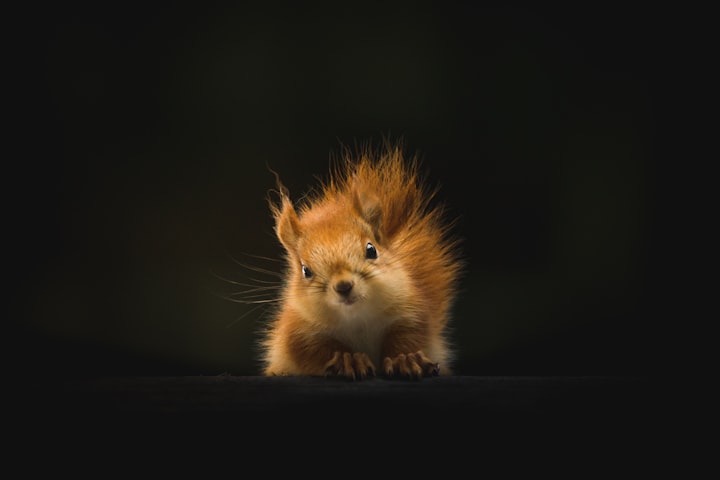Where In The World Did That Come From
What squirrels know is not nuts

Where In The World Did That Come From
I am a tourist, of the variety that becomes totally immersed in my travels. Along the way, I never know where a discovery will lead me, or who I will meet along the way. My usual MO, is to envelop myself in the fauna and flora, and history of the attraction I am visiting. When all is said and done, I will have collected dozens of pamphlets, research information, photographs and plenty of knickknacks, nap sacks, funny hats and door mats. But I was looking for the undiscovered sliver of information that could wow my friends.
Descanso Gardens has been my most recent exploration. On this day, a bunch of botanist friends from college, decided to go with me, just because they knew more than me, about botany. Today, I was willing to stuff my face with the gift shop fudge, as I was touring, share information and let the wind lead the way. Descanso is undeniably gorgeous. It is a beautiful 150-acre botanical garden, located in La Canada, California, about thirty minutes from Burbank. That’s the landmark, where all of us started our day.
Descanso gardens has a large forested, area with man-made streams, ponds, and independent flower and plant gardens. There are about 150 Sierra Redwoods on the property that predate the original owner’s plantings. There are some beautiful Oak that survived a fire in the 1800's, and a garden they refer to as the Ancient Forest full of prehistoric plants – plants from a time when klutzy dinosaurs bared their teeth, and freaked the living daylights out of the little creatures that roamed the Earth. Imagine the sound of every step of these monsters in your backyard. Holy Mackerel, it would be like surround sound every day. At the garden, you will find plants that first appeared in the Jurassic period about 175 million years ago. These ancient plants, include cycads, ferns, and Redwoods. The plants on site, are a pretty staunch bunch of survivors, as they have endured changes in the world’s climate, geography and competition from other plants and animals.
The Coast Redwood Sequoia found on the property, is the big guy, and can live for more than 1,000 years and grow to be the tallest living trees on Earth. The first Redwood fossils, date back more than 200 million years to the Jurassic period. Growth rings counted circle by circle, show the oldest known Redwood dating back to nearly 2,200 years ago. It is located in Northern California, and is affectionately called the Big Tree.
The group of us, had just entered the park, and we were talking about the tree circles and the tedious way scientists study the age. I began to get hypnotized, just listening to my scientist friends and their plant knowledge. I told the group that I knew of a Redwood tree near the entrance of the park. They were all excited about the prospect of seeing the old tree. It had been years since I saw a Redwood, and my first inclination was to throw my arms around the tree, very gently and send my tree hugging love. All of a sudden out of blingin nowhere, some creature way atop the tree, started flinging nuts down on my head. I was the unfortunate chosen one. I pointed my finger up at the animal and yelled out, “Stop embarrassing me, in front of my friends… come down where I can see you face to face”. It was as though the little character heard me. In a flurry, there was rustling, scratching, and then suddenly… there she was. A grey squirrel with a bushy copper colored tail was sitting in front of me. She placed the nut down as though it was a guilt offering. And then she placed an unknown plant material in front of me as well. When I picked it up, to display it in front of my friends, they suddenly became wide-eyed with a fascination of this new discovery, and awe set in.
There was a universal agreement. “This looks like seaweed”, was the answer in unison. How and why was this seaweed atop a tall two hundred foot Redwood tree, and why was it there?
The squirrel had set the wheels of curiosity in motion for me, and my buddies, as we had discovered something by way of a very intelligent creature, who had gifted us with the world of the unknown. Our discovery would start me on a research mission that could prove that the sea below, could live in a world above the highest domain of trees that is unseen by man.
Luckily for me, trees have been my passion ever since I was a kid. I have been known to talk to trees during my hikes or walks at neighborhood parks. Asked if a tree will talk back- I will have to say Yes. Just listen, and they will tell their stories, in this apron of time of their secret world, and how we may live side by side.
I laid in bed all night, thinking of possible reasons for seaweed living in the higher elevations of a Redwood tree. As soon as I got back home, I called my hiking group, which consists of a bunch of long time hikers that have been in every nook and cranny of the country. I am one of these people that would rather check with my trusted sources, before I go to the internet, and I knew on some level, that I would find a lead to the seaweed phenomenon. Sure enough one of my friends for many years, had read a book by Richard Preston, called the Wild Trees. Mel is a tree climber, so he pulled out his book and began to highlight the underlined parts of the book that he felt would connect me to my squirrel offerings.
Richard Preston, a journalist, New York bestselling author, and science consultant, begins his book with a story about some young climbers, home for a spring break in 1987. A group of three guys thought they would attempt to navigate the deep unknown pockets of the California rainforests, where Redwood trees were prolific. Some of the trees that were described, were thirty feet around at the base and had no limbs in the lower elevations of the trees. One of the climbers, by the name of Steve Silett, who became a world renowned botanist, known for his exploration of tree canopies was passionate about tree climbing. Alone in the woods, with his other scientist friends, he climbed a shorter neighboring tree, and then flung himself into an upper limb of a Redwood. Because it was frighteningly difficult to climb down the tree, he continued to hoist himself up to the highest canopy of Redwood airspace.
It was there, that he discovered an untouched fragile, never before seen ecosystem. Which has been acknowledged as the last unknown ecosystem. As I listened to the story, I could only imagine the world through these young men’s eyes. The branches above became flying buttresses, with interwoven cathedrals of trees and branches that balanced other species of trees like Cypress, Hemlock and Oak. The men found layers of soil on the branches that probably took about five hundred years to form. As Steve climbed without a water bottle, he was able to drink from a small cave of seeping running water.
Did my squirrel have knowledge she wanted to share with me which was unknown to most people? The nuts she threw was a wakeup call. Her offering was precipitous of what I personally discovered and gave me a deeper connection to Redwood trees
I told Mel I had so many questions about the climbers, and was curious about their future endeavors. We sat for an afternoon, with a good strong pot of coffee and he continued. Mel scourged through the book, and his own notes. As time went on Steve Silett, and a colleague by the name of Marie Antoine, developed a spider rig apparatus for climbing.
The rig configuration- perhaps a V formation, was made of silk fine sturdy material, and was used to hoist the climbers into the trees without touching any limbs. Once about thirty feet into the air, they could guide through Redwood space until they identified the next location. A device referred to as a Cambian Saver, was used to gently slide the silk rope through the apparatus, without ever touching the limbs of the trees. The threaded rope, was then looped through as the climb continued. How did these scientists discover seaweed in the trees you may be asking? On one of the many climbs, Dr. Steve Silett, discovered plankton, poking out of the root system of the fern forests in the canopy of the trees. This plankton is the same organism that grazing Grey whales eat. He brought his discovery to the university where the phenomenon was pondered for many years. I am still fascinated with how our tree squirrel found the same plant.
Just before I turned in this story, I called a friend of mine to review the information. When I told him about the squirrel and then Dr. Sillett’s findings, he offered an interesting question.
What if the Redwood trees where under the sea, and your squirrel brought you the remains of prehistoric undersea forest.
About the Creator
Zel Harrison
I travel with a nap sack on my back to gather stories and sit in the circle of humanity.






Comments
There are no comments for this story
Be the first to respond and start the conversation.